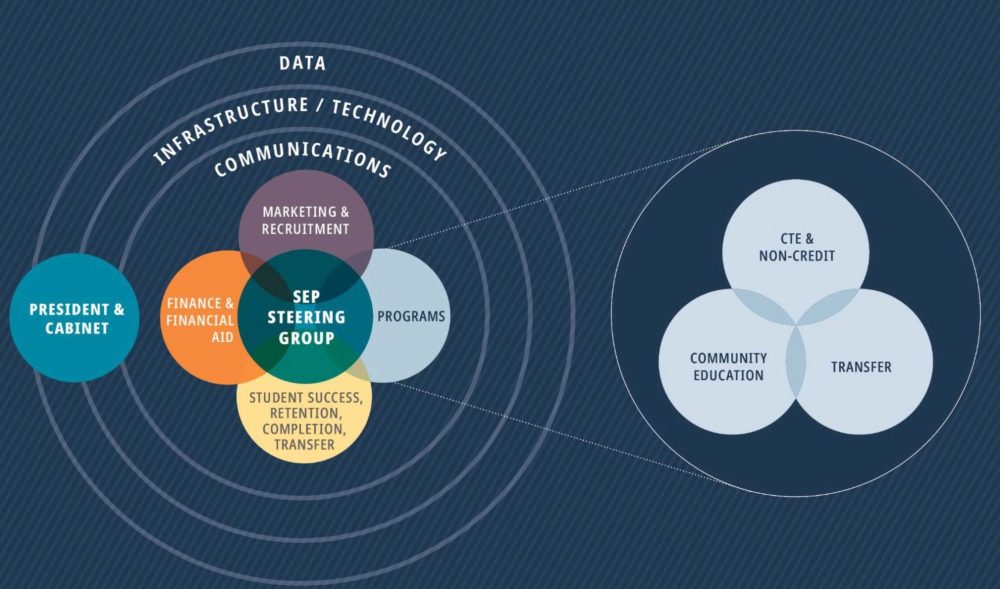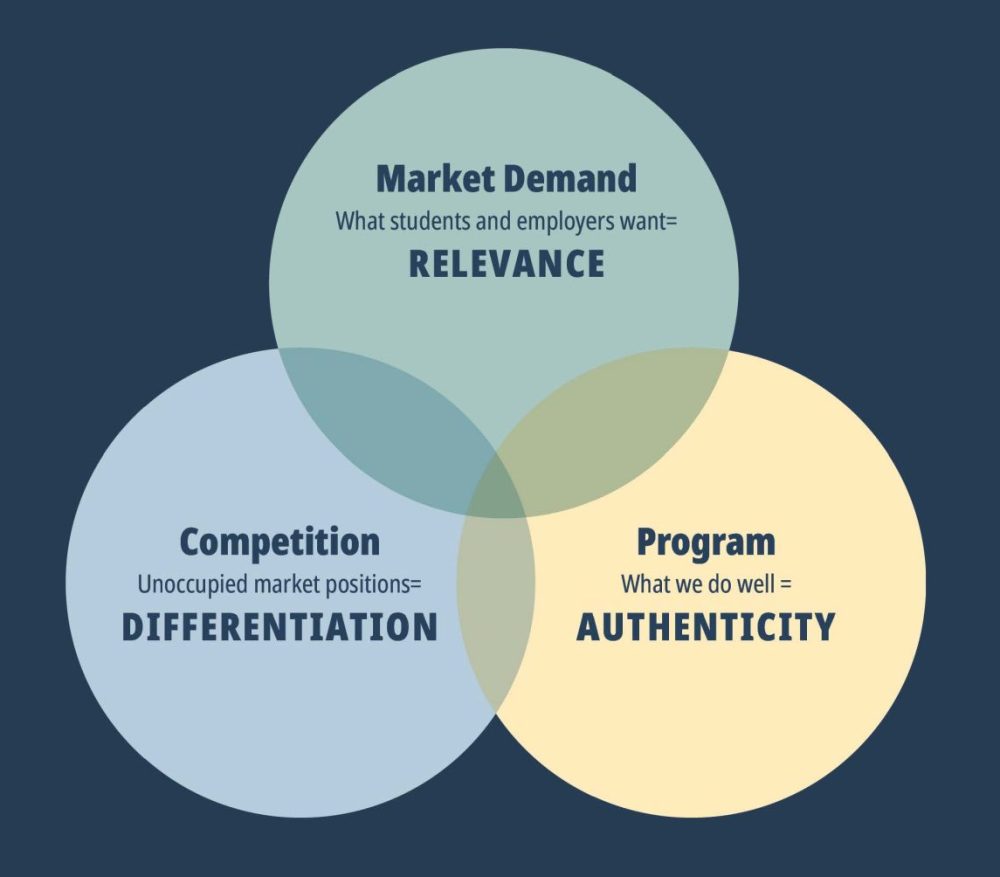Strategic Enrollment Management Planning

Our Strategic Enrollment Management (SEM) project will expand upon and fully develop a strategic enrollment management philosophy, plan, marketing strategy, and associated budget model that recognizes and centers shifting community demographics and the education and training needs of underserved and marginalized community members.
Strategic Enrollment Management is a critical project called out in our 2020-2025 Strategic Plan. During some of the initial phases of this work, the college established overall enrollment goals and established short-term tactics to help re-activate our campuses and work to stabilize enrollment. Continued enrollment challenges have underscored the importance of a long-range approach to managing our enrollment.
The next phase of work is to develop a comprehensive, multi-year Strategic Enrollment Plan (SEP) to guide the college in stabilizing and growing enrollment. Ryan Clark, Dean of Enrollment Strategy & Services, will be leading this work, joined by Dr. Lew Sanborne, a national leader in college enrollment planning who will be helping facilitate the development of our Strategic Enrollment Plan. We are building out our project plan, timeline, and working structure. We anticipate the plan will be completed in early Fall 2023.
What kinds of topics will be part of this process?
After we do a deep dive into both internal and external data, our planning teams will consider the entire PCC student experience when analyzing our current enrollment situation and potential strategies to be included in our plan. Things like what academic programs we offer, the modalities and locations in which we deliver our programs, our tuition, fees, and student financial supports, co-curricular and student support programming, as well as how we market and recruit students are all in the scope of this planning effort.
This college-wide process is sponsored by Dr. Bennings and the President’s Cabinet. A steering group, composed of college leaders who are responsible and accountable for executing and delivering the various aspects of the plan, will coordinate overall efforts. We have identified the following working groups to each focus on a specific portion of the work:

See text description of graphic
- Marketing & Recruitment Workgroup
- Student Success, Retention, Completion/Transfer Workgroup
- Student Finance & Financial Aid Workgroup
- Academic Programs Workgroups (three groups):
- CTE & Academic Non-Credit Programs
- Transfer Programs
- Community Education Programs
Relevance, authenticity, differentiation
We’re looking for the intersection of what students and employers want, unoccupied market positions, and what we do well.

Strategic enrollment planning phases and timeline
- Preparation
- Identification of Key Performance Indicators
- Developing a Comprehensive Situation Analysis
- (Data Compilation, Research, the SEP Dashboard, etc.)
- Strategy Identification
- Action Plan Development (Business Plan for each Potential Strategy)
- Strategy Prioritization (Mission-fit, ROI, Likelihood of Success)
- Develop Quantifiable Goals and a Funding Strategy
- Execution, Evaluation, and Modification

See at text description of the graphic
- Preparation and Data Analysis, from November–February. Key performance indicators, data collection, and situation analysis.
- Strategies, from March–September. Strategy development, tactic identification, strategy prioritization, and return on investment considerations.
- Enrollment Goals, from September–November. Enrollment projection, goal setting, and written plan finalization.
- Implementation and Continuation, November 2023 forward. Implementation of plan, SEP transitions to SEM, and monitor, evaluate, and update plan.
